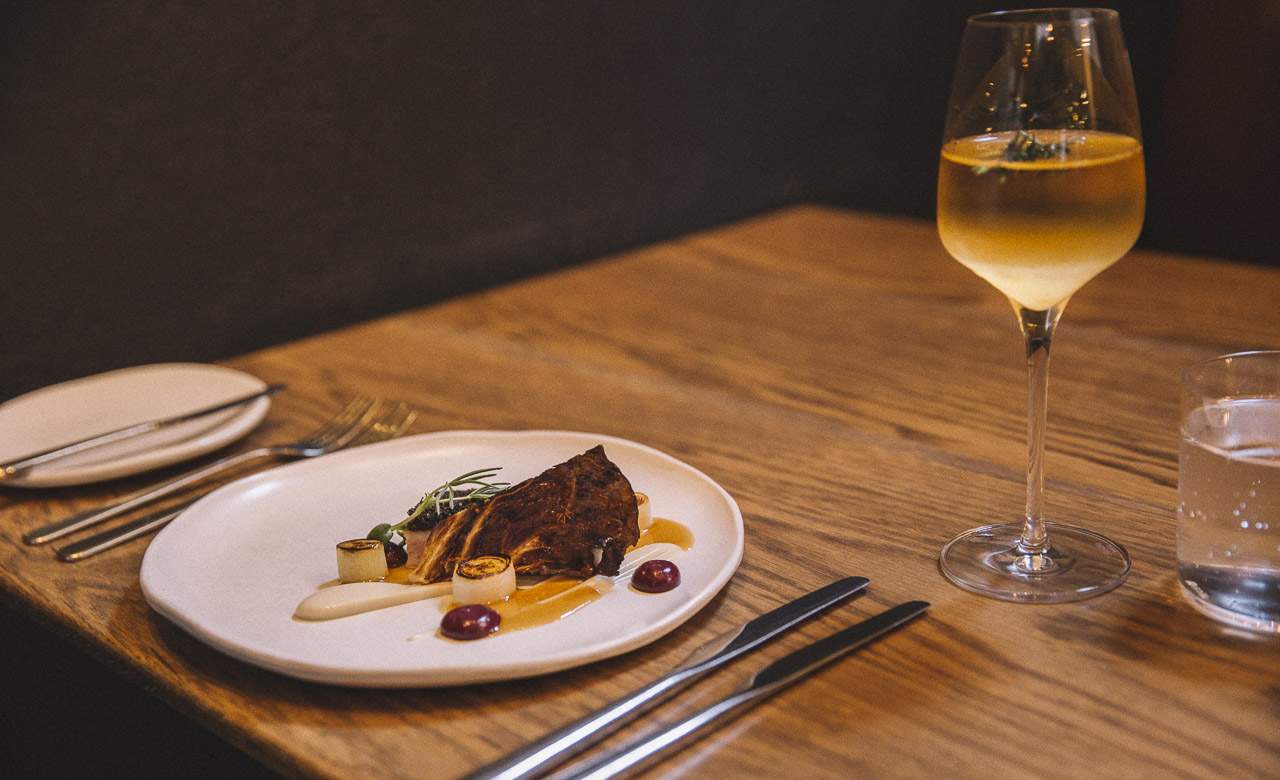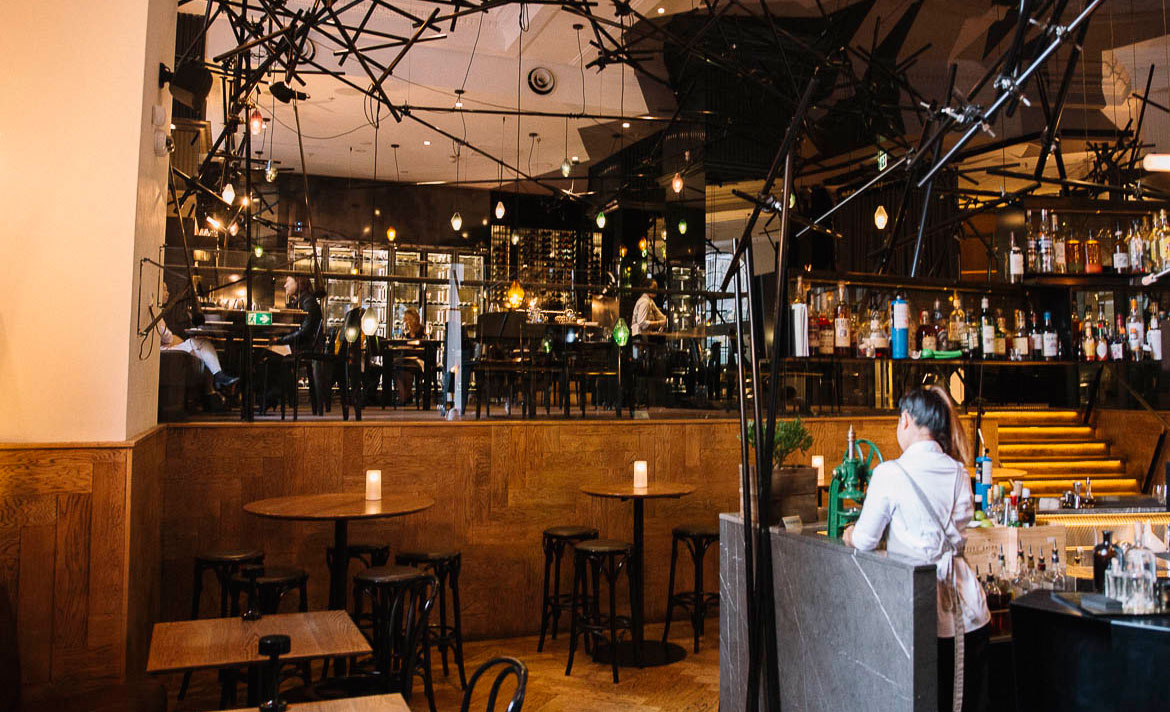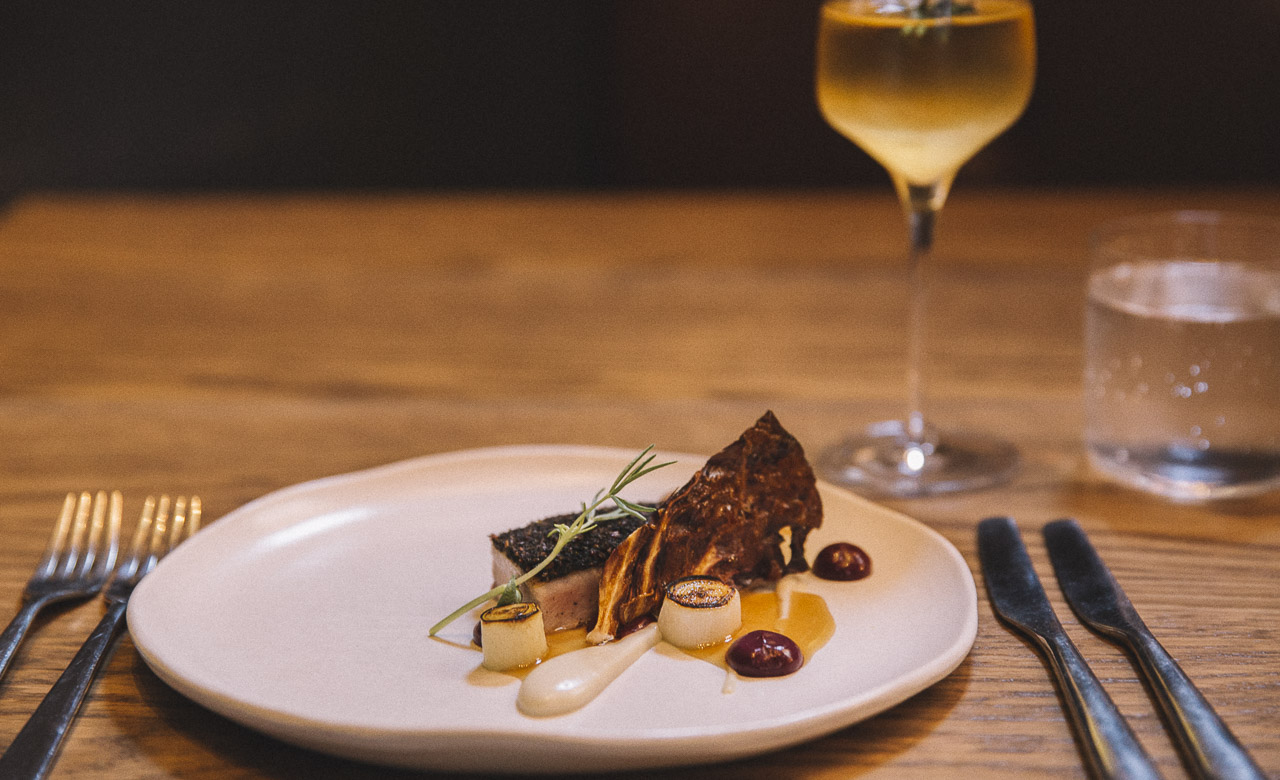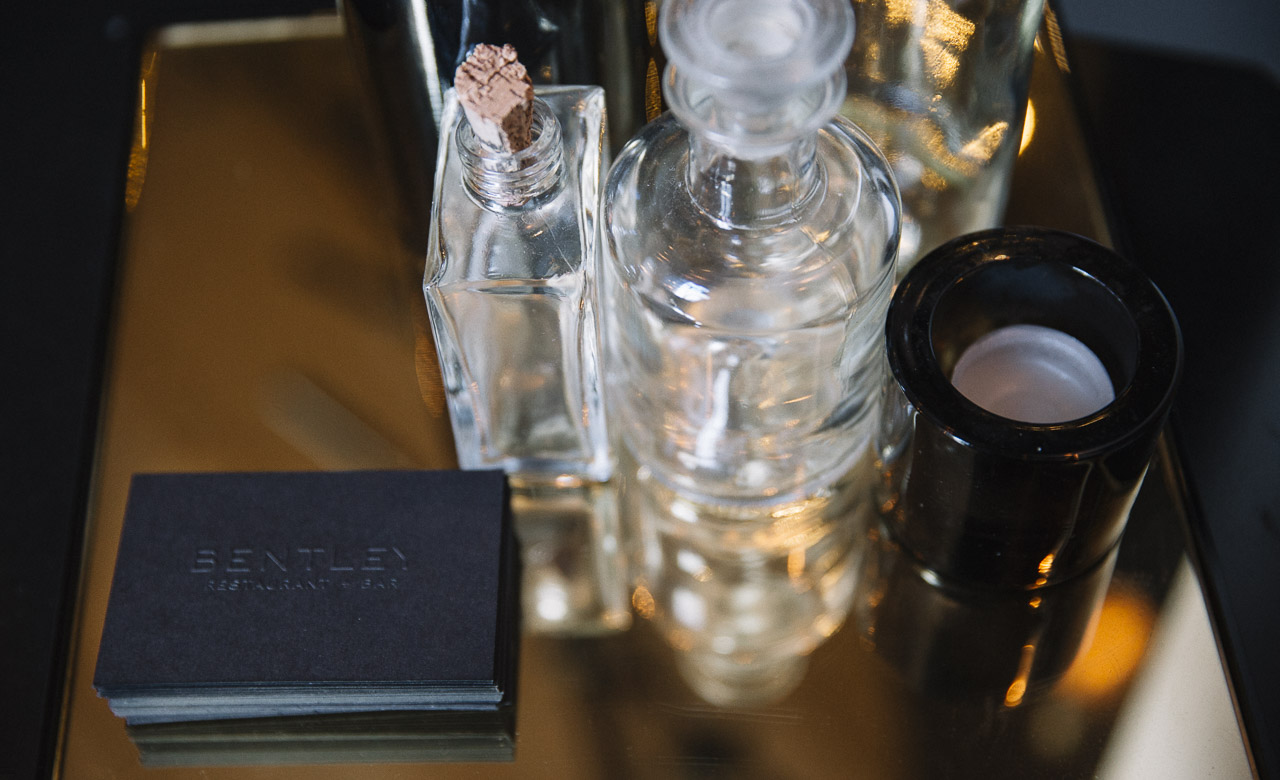Could Juice Pairings Give You a Better Dining Experience Than Wine?
Australia's top restaurants are experimenting with some special non-alcoholic concoctions.
Near the end of the degustation at Momofuku Seiobo, you receive a dish of steamed grouper endives, celeriac puree and bonito dust — and a glass of onion juice. It’s part of the restaurant’s juice pairing, an alternative to matching wines where you get a different juice with each course.
Momofuku Seiobo was the first restaurant in Australia to offer anything like it. “We had plenty of customers who are coming and they don't drink alcohol, and it's sort of ripping their experience a bit,” says assistant sommelier Ambrose Chiang. “So we worked out with the chefs what's in season and what's available.”
That’s how it started, simply juice. It has since evolved to be a much more creative and nuanced way to pair food and drink. “People think it's just apple, orange and pineapple ... Things you could usually get out of a bottle. Sometimes it blows their mind a little bit.” Ambrose says. “It's the same way we approach the wine pairing. Certain flavour profiles, how we serve it, serving temperatures. Whether we strain the juice or not to give it more texture.”
HOW MOMOFUKU DISCOVERED THAT ONIONS HAVE LAYERS
Ambrose’s ‘onion water’ is the best example. As Momofuku’s menu is based around light and savoury flavours, Ambrose wanted to experiment with creating a savoury juice. “One problem with doing savoury juice — I don't want it to be a broth, I don't want it to be a sauce,” he says. Having something too heavy would offend the dish and that’s the last thing any sommelier wants to do. So he came up with an idea for, not onion juice or onion sauce, but onion water.
Brown onions, spring onions and eschallots are cooked in a steaming hot pan until burnt and caramelised. Smoky and slightly sweet in flavour, they’re placed in bags of water and steamed overnight at 65 degrees. In the morning, Ambrose strains the onion and freezes the flavoured liquid. Still oily from the infusion, the ice block is left to drip through a fine muslin bag for two days. It looks like black tea and tastes, at first, like a nothing but a hint of savoury. Then, before it sinks down your throat, you get a burst of charred onion flavour.
Ambrose describes the accompanying steamed fish course as “very savoury, slightly smoky but light”. To match it he needed something that was equally light but “with a slight sweetness, smokiness and savouriness” — exactly what you get from his onion water.
EMBRACING MOLECULAR GASTRONOMY IN LIQUID FORM
With the help of similar pioneering restaurants overseas, Momofuku’s innovation has helped the idea of non-alcoholic pairings to be taken more seriously in Australia. Sydney's Bentley and newcomer nel. are the most recent of a small but growing number of restaurants to test the idea of juice pairings. “My reaction was probably similar to others — sceptical to say the least,” says Bentley sommelier Nick Hildebrandt. “But with our new bar manager and drinks guru Phil Gandevia we actually started to put some thought and effort into it and came up with something that I believe is unique and very good.”
Bentley’s first dessert — coconut sorbet, desert lime and honeyed melon — is now available with a pineapple, aloe vera and basil juice. “The idea was not only to match the dessert but to in a way add to it by having another component in liquid form sitting to the side.”
Melbourne’s Attica runs a juice pairing based on the produce from their 1200 square metre garden. Banjo Harris Plane, the head sommelier, says one of his favourites is a cold smoked Granny Smith apple juice that’s paired with a King George whiting that’s been torched in a paperbark wrapping. “The harmony between the aroma of the dish and the juice is incredible.” Even with the success they’ve achieved at Attica, Banjo says they’re still scratching the surface of what could be done. “Next for Attica is to experiment with non-alcoholic fermentations, carbonation and thickening. We have also been looking at a scientific device called a homogeniser that incorporates liquids into each other, resulting in better consistency.”
TAMING THE SWEET AND THE ACIDIC
Joshua Picken, sommelier at Orana in Adelaide, told us they’re working on something similar for their juice pairing using native ingredients. “I have been playing with structural elements like tannin and tartaric acid. We explore non-alcoholic fermentations as I don't want every juice matching to taste sweet.”
It’s a sentiment shared by many top sommeliers. “When you think about the juices that are available to us, they're quite sweet," says Ambrose. "If you're just offering juice by the glass, it's fine, but if it’s a pairing, it has to be working with the menu.” He says some other pairings he’s had served great juices, but they’ve been too sweet or overpowering to match the food.
After being surprised by a customer request for a non-alcoholic pairing, Quay’s head sommelier, Amanda Yallop, was inspired to create a matching of mocktails and tea. “I am not a fan of only juice being presented. I’m a very big fan of acid in my wines, but to chase an entire meal with only juice is simply too much acidity.” Similarly, Vue de Monde and Brae in Victoria offer entire tea matchings from specialised tea sommeliers.
THE NON- (OR LESS-) ALCOHOLIC FUTURE
“I think that an evolution is on its way," says Amanda. "Chefs, bar staff and sommeliers are playing and testing with these pairings on a pretty serious level. There is enormous potential as to how far and how extreme it can become.” Despite that, she thinks non-alcoholic matches will never be treated with the same level of passion as wine.
Considering both the range of flavours available to juice and the fact that high quantities of alcohol dampen your ability to taste, it could be argued that a non-alcoholic pairing is ultimately more appropriate for degustation-style eating. For one of the best sommeliers in the country, that doesn't quite fly. “I’d argue that there’s still more variety in wine than there is in juice, but I don’t really see it as either or,” says Banjo. “Different occasions for different things.”
So perhaps a drink pairing is the best solution? Instead of juice or wine pairings, you’d simply get a different drink matched to each course; some will be wine, some will be juices and some will be something new. “What a fun idea," says Amanda. "I’m not sure how it would go down with guests expectations ... I might try it at Quay’s next food and wine training with our floor team and gauge the reception.”
Images: Bodhi Liggett.










